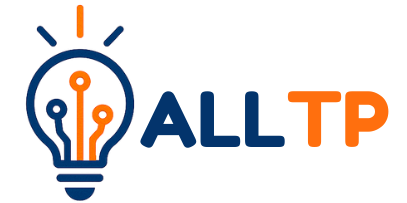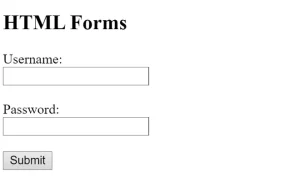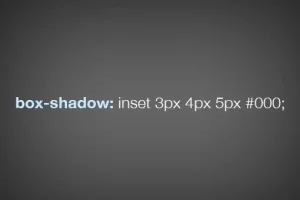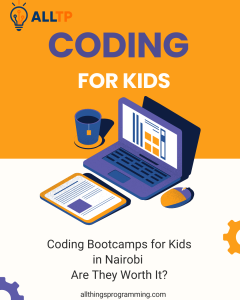Coding is an essential skill in today’s digital world, and Kenya is rapidly advancing its technology landscape. Many schools want to teach coding but face budget limits and a shortage of IT teachers. These challenges make integrating coding difficult for most schools.
At All Things Programming, we provide a complete coding program and free training for existing teachers. Our training empowers educators to confidently teach coding without needing prior IT expertise. This means schools don’t have to hire extra IT staff to introduce coding.
By partnering with us, Kenyan schools can easily and affordably add coding to their curriculum. This solution builds teacher capacity while saving costs, ensuring students gain vital digital skills for the future. Coding in Kenya is growing rapidly, and schools that embrace these skills will prepare students for the opportunities ahead.
The Current Challenges of Introducing Coding in Kenyan Schools
Lack of Qualified IT Specialists and Coding Teachers
Despite the growing need for coding education, many Kenyan schools face significant hurdles in making this a reality. One of the primary challenges is the lack of IT specialists or qualified coding teachers. Many schools simply do not have staff with the technical expertise necessary to teach programming, making it difficult to deliver quality coding lessons.
This is where All Things Programming comes in; we offer free training to teachers, thus no need to hire more staff. We also provide trained teachers to schools without.
Financial Constraints Limit Hiring and Infrastructure
Financial constraints also play a major role. Recruiting additional staff, especially specialized IT teachers, is costly. Many schools operate on tight budgets that prioritize basic needs, leaving little room to invest in new hires or in the infrastructure required to support coding classes, such as computers and software licenses.
Limited Teacher Confidence and Experience
Moreover, even existing teachers often have limited confidence or experience with coding and digital literacy. Without proper training, they may feel unprepared to teach programming, which further delays the integration of coding into the curriculum.
Misconceptions About Hiring Needs
Lastly, there is a common misconception that coding education requires specialised hires or external experts, which discourages schools from exploring more affordable and sustainable solutions. This belief can lead to inertia, preventing schools from taking the necessary steps to equip students with essential digital skills.
Why Coding is Essential for Kenyan Students
Gateway to Future Careers in Tech
Coding is more than just a technical skill; it is a gateway to countless opportunities in Kenya’s rapidly growing tech and digital economy. By learning to code, students gain access to future careers in software development, data science, artificial intelligence, and other high-demand fields that are driving economic growth both locally and globally.
Development of Critical Thinking and Creativity
Beyond specific career paths, coding cultivates critical skills such as problem-solving, creativity, and logical thinking. These abilities help students approach challenges methodically, design innovative solutions, and adapt to new technologies, skills that are invaluable across all disciplines.
Alignment with National Goals
Integrating coding into education also aligns with Kenya’s Vision 2030 and government initiatives aimed at transforming the country into a knowledge-based economy. Digital literacy and coding form the backbone of these efforts, ensuring Kenya remains competitive on the global stage.
Relevance Across Multiple Sectors
Furthermore, technology’s influence is expanding across all sectors from finance and agriculture to education and healthcare, making coding a vital tool for understanding and shaping the future. Equipping students with these skills prepares them to contribute meaningfully in a digital society and economy.
All Things Programming: The Partner Schools Need
Democratizing Coding Education Across Kenya
All Things Programming is on a mission to democratize coding education across Kenya by making it accessible, affordable, and sustainable for all schools. Recognizing the challenges many institutions face, the program focuses on empowering existing teachers rather than relying on the costly and scarce recruitment of IT specialists.
Free, Comprehensive Teacher Training
Through a comprehensive, free teacher training program, All Things Programming equips current educators with the skills and confidence to teach coding effectively. This approach ensures that schools, whether in bustling urban centers or remote rural areas with limited resources, can integrate coding into their curriculum without needing to hire additional staff.
Flexible and Tailored Support for Schools
The program’s flexibility is a key strength; it adapts to different school environments and resource levels, providing tailored support that meets diverse needs. Participating schools benefit not only from trained teachers but also from ongoing guidance and access to ready-to-use, practical coding curricula and teaching materials.
Building Sustainable Capacity
By partnering with All Things Programming, schools gain a sustainable solution that builds internal capacity, making coding education scalable and long-lasting without the financial strain of hiring specialized IT personnel.
How Schools Can Implement Coding Without Hiring Extra Staff
Leveraging Existing Teachers
One of the most effective ways for Kenyan schools to introduce coding is by leveraging their existing teaching workforce. Rather than hiring new IT specialists, schools can empower current educators by providing them with the right training and resources to confidently teach coding.
Free Teacher Training and Certification
All Things Programming offers free Continuous Professional Development (CPD) courses and certification programs designed specifically for teachers. These programs build digital literacy and coding skills step-by-step, ensuring educators feel prepared to guide students through coding concepts and projects.
Using Beginner-Friendly Coding Tools
To make learning accessible, the program promotes user-friendly coding tools and platforms that require minimal prior experience. These beginner-friendly resources make it easier for teachers and students alike to engage with coding, even in schools with limited technological infrastructure.
Integrating Coding Across Subjects
Additionally, coding can be integrated across various subjects, such as computer studies, mathematics, and science, allowing schools to embed programming skills in multiple areas of learning. This cross-disciplinary approach helps students see the practical applications of coding in real-world contexts.
Starting Small with Pilot Programs
Schools are encouraged to start small by launching pilot programs that allow teachers and students to adapt gradually. Once successful, these initiatives can be scaled up, building a sustainable culture of coding education without the need for additional staff recruitment.
Benefits of This Approach
Significant Cost Savings
Integrating coding into schools by training existing teachers rather than hiring new IT specialists offers significant advantages. First and foremost, schools save substantial costs by avoiding the expensive recruitment and salaries associated with specialized staff. This makes coding education more financially accessible, especially for schools with tight budgets.
Teacher Motivation and Professional Growth
Empowering current teachers also boosts their motivation and professional growth. As educators gain new skills and confidence, they become more engaged and invested in delivering quality coding instruction, which positively impacts the entire learning environment.
Improved Student Outcomes and Digital Literacy
Students benefit greatly from this approach through improved outcomes and enhanced digital literacy. Exposure to coding fosters critical thinking and problem-solving abilities, preparing learners to thrive in a technology-driven world.
Building a Sustainable Coding Ecosystem
Moreover, this method helps build a sustainable ecosystem for coding education across Kenya. By developing internal capacity within schools, coding programs can be maintained and expanded long-term without reliance on external experts.
Promoting Inclusion and Accessibility
Finally, the approach promotes gender inclusion and outreach to underserved communities by making coding education more widely available and accessible, helping to bridge digital divides and create equal opportunities for all learners.
How Schools Can Get Started
Integrating coding into your school’s curriculum with All Things Programming is straightforward and designed to be accessible for all schools across Kenya. Here’s how to begin:
Partner with All Things Programming
Schools interested in introducing coding can reach out to All Things Programming to establish a partnership. This collaboration opens doors to free teacher training and access to curated coding curricula tailored to your school’s needs.
Enroll Teachers for Free Training
Once partnered, schools can register their existing teachers for comprehensive, no-cost Continuous Professional Development (CPD) programs. These courses equip educators with the knowledge and confidence to deliver coding lessons effectively.
Access Resources and Ongoing Support
All Things Programming provides schools with ready-to-use teaching materials, coding tools, and continuous mentorship. This ongoing support ensures teachers stay updated and students benefit from a dynamic learning experience.
Engage School Leadership and Parents
Successful integration also requires buy-in from school management and the wider community. Engaging leaders and parents helps create a supportive environment that values digital literacy, ensuring sustained commitment to coding education.
By following these steps, Kenyan schools can confidently introduce coding into their classrooms without the burden of hiring extra staff, making quality digital education a reality for their students.
To conclude, integrating coding into Kenyan schools faces real challenges, from budget limitations and a shortage of qualified IT teachers to limited resources and misconceptions about the need for specialized staff. However, these obstacles are not insurmountable.
By partnering with organisations like All Things Programming, schools can access a practical, scalable solution that empowers existing teachers through free training and provides ongoing support and resources. This approach eliminates the need for costly new hires and makes coding education accessible and sustainable for schools across the country.
We encourage Kenyan schools to take advantage of this opportunity today. Empower your teachers, inspire your students, and start building a strong foundation in coding for beginners that will open doors to the digital future.




